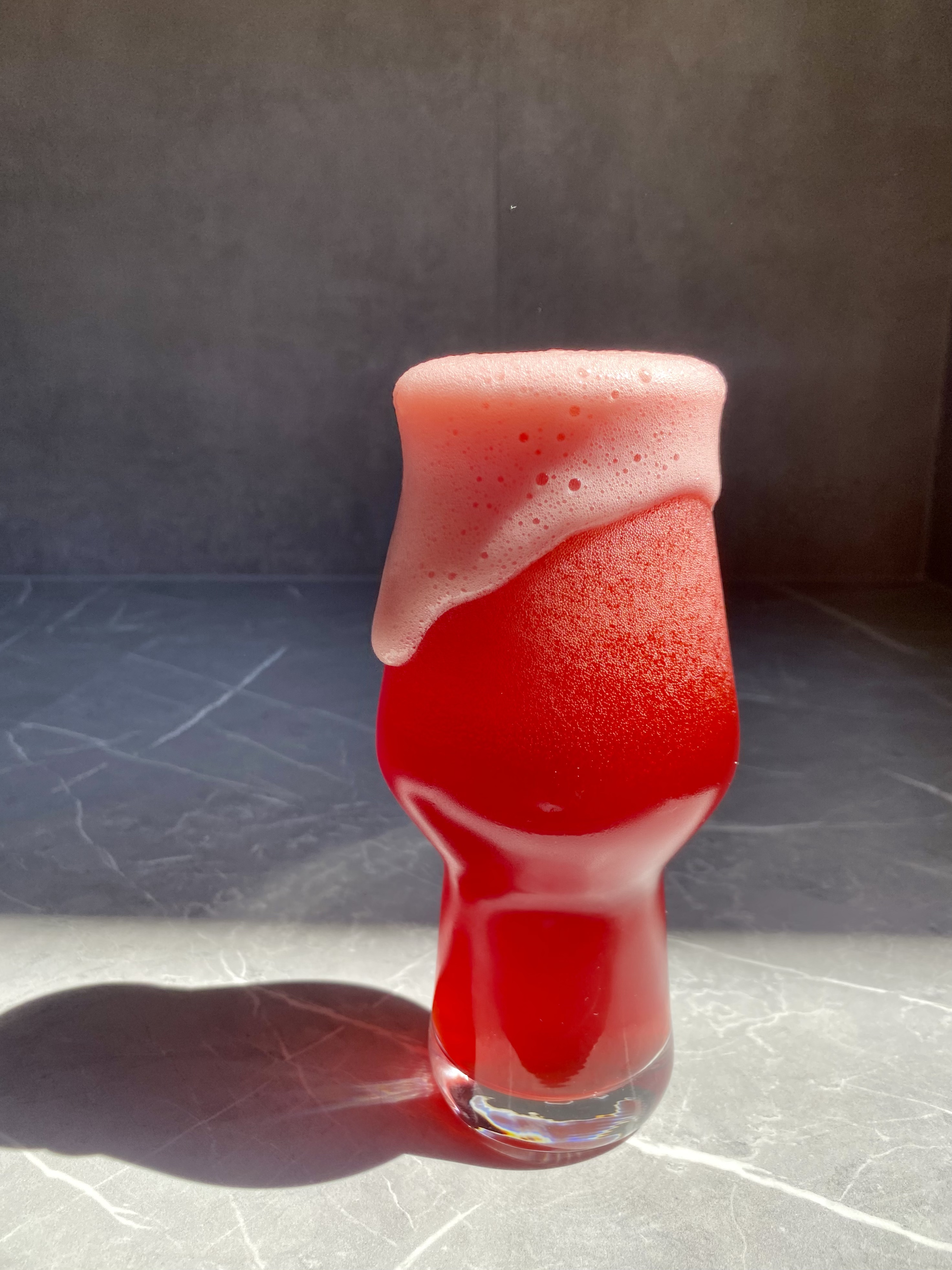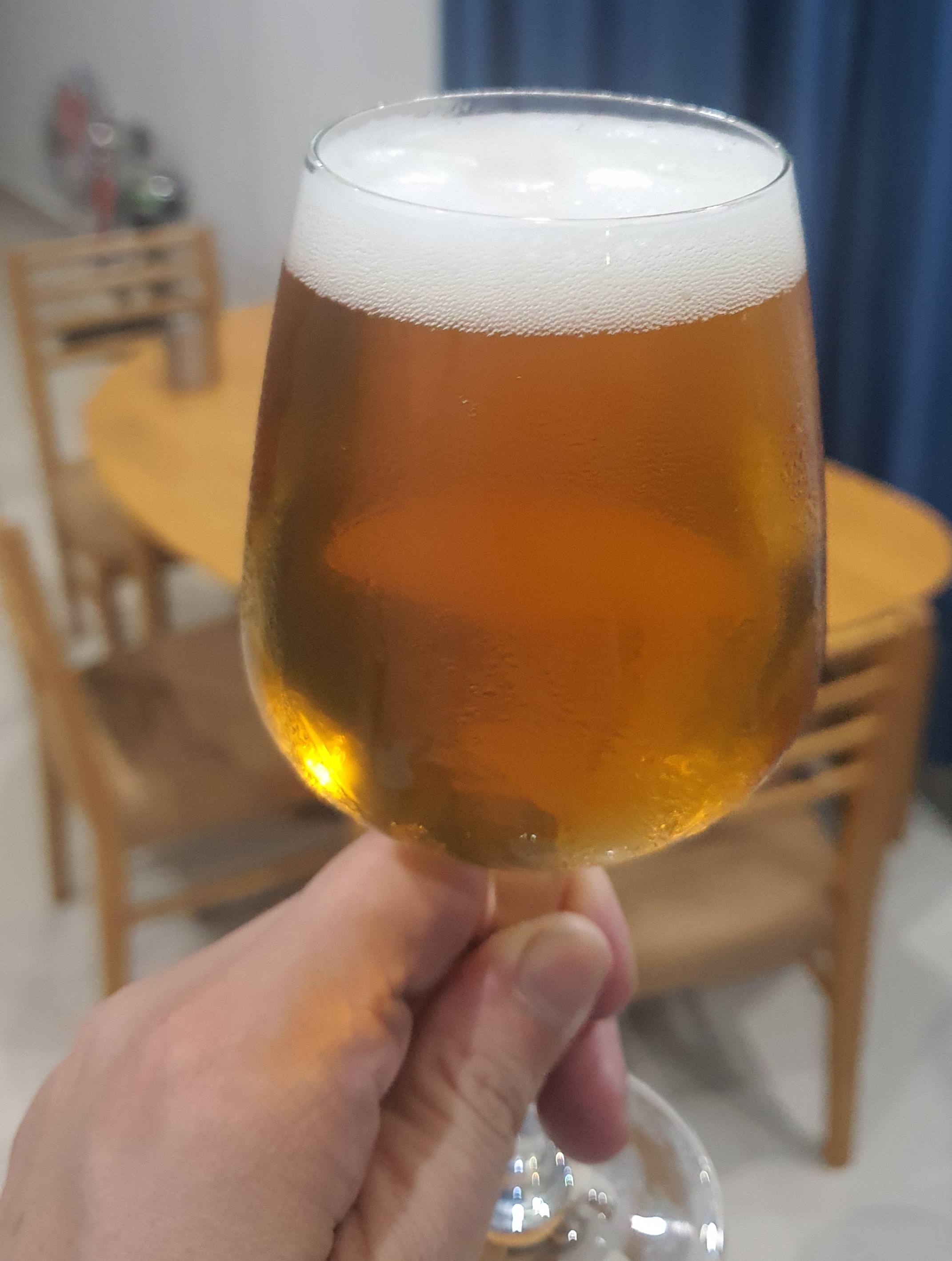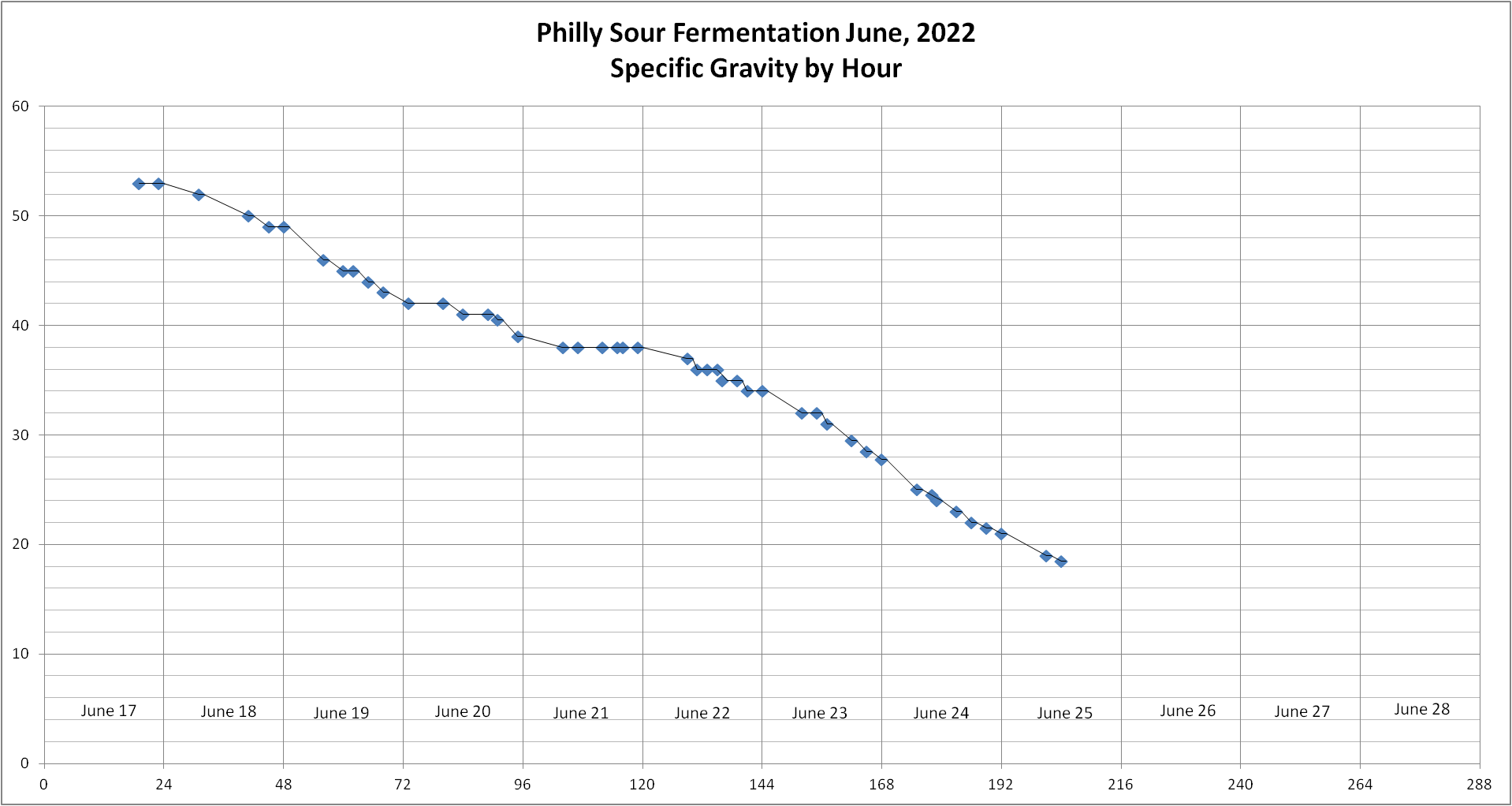DuncB
Well-Known Member
What kind of gravity is sugar cane juice ?

Yes, actually, and I didn't really know why... I was kind of hoping the sugar cane had some sort of super fining powers that made everything floc together in the boil and my beer would be super clearDid you get more kettle break and trub than with normal recipes due to the fibre?











Put down my first brew on Friday using this yeast. The only knowledge I have of it is what I’ve picked up reading this thread.
I pitched 1 packet into 1.080 wort and left it for two days. Activity had only just started and the pH was down to 3.6. I had a taste and the sourness so far was really nice.
I then pitched my starter of LA3. 4 days in now and it’s bubbling away very well. The pH is still 3.6 so it’s seems that the Philly Sour has done its job and now the LA3 is doing the rest of the work.
I’m gonna add a boatload of raspberry to it post fermentation. I want to brew something along the lines of Mega Tastee by the Veil.

Looks delicious! I've fruited a couple of beers with this and it always turns out nice, especially with raspberry.Pretty happy with the result of this beer. Nice moderate sourness that plays well with the tartness of the raspberry. Definitely going to use this yeast again.
View attachment 743593

The sugar cane juice sour has cleared up nicely (now that it is almost gone). I used a lot of wheat and some Vienna malt in this one hoping to give it some interesting character to compliment the sugar cane juice. I'm quite happy with how it turned out.
Very sour, but pleasantly so. Nice body and head retention. Crystal clear golden-yellow color with a nice white head. I get both apple and stone fruit notes with this one. Not as funky as others I've made.
Can't wait to use this yeast to make a fruited sour. Already ordered the fruit purees!
To your question. Do you need to pitch dry yeast to finish off. I don’t think so. I believe your rhubarb addition will finish out. You didn’t mention that you were in a hurry on this beer so I don’t think time is your concern. Ride it out and see what happens. You chose this Philly Sour for a reason, why not see what it does. Adding other variables won’t help in determining its use again in the future.
Thanks for chiming in! I'm sorry, the reason I am asking is somewhat implicitly buried in the middle of my post: I have only one fermentor, which I would like to free after about 10 days, hence the hurry.
Otherwise, I'd prefer to let it ride and see what happens.
I've done over 10 batches with philly sour they all finished at day 10. Even higher gravity 1.070+Thanks for chiming in! I'm sorry, the reason I am asking is somewhat implicitly buried in the middle of my post: I have only one fermentor, which I would like to free after about 10 days, hence the hurry.
Otherwise, I'd prefer to let it ride and see what happens.
I have a 1.044-OG Berliner-ish beer fermenting with PhillySour right now - 2 sachets for about 5.5 gallons. The plan is to add 3l of "juice" made from 1.5kg of rhubarb (plus water, obviously) to that.
Since rhubarb contains barely any sugars, my idea is to add the rhubarb towards the end of fermentation in order to not have the introduced acid interfere with the yeast's performance (and possibly preserve more "fresh fruit" flavours).
Now, I'd like to squeeze in the next brewday in a week and I have only the one fermentor.... (I just ordered another one online, but I'm not 100% sure it'll be here in time)
From what I've gathered, PhillySour can take a bit to finish fermentation, so I'm contemplating adding a sachet of some dried neutral ale yeast to finish fermentation after a couple of days, when acid production should be completed. I'm a bit worried the newly introduced yeast might not like a nutrient-depleted wort with low pH and considerable ethanol.
Any advice on how to pull it off? Any experiences? Am I overthinking this? Or is it generally a bad idea (and I should feel bad)?
I have a 1.044-OG Berliner-ish beer fermenting with PhillySour right now - 2 sachets for about 5.5 gallons. The plan is to add 3l of "juice" made from 1.5kg of rhubarb (plus water, obviously) to that.
Since rhubarb contains barely any sugars, my idea is to add the rhubarb towards the end of fermentation in order to not have the introduced acid interfere with the yeast's performance (and possibly preserve more "fresh fruit" flavours).
Now, I'd like to squeeze in the next brewday in a week and I have only the one fermentor.... (I just ordered another one online, but I'm not 100% sure it'll be here in time)
From what I've gathered, PhillySour can take a bit to finish fermentation, so I'm contemplating adding a sachet of some dried neutral ale yeast to finish fermentation after a couple of days, when acid production should be completed. I'm a bit worried the newly introduced yeast might not like a nutrient-depleted wort with low pH and considerable ethanol.
Any advice on how to pull it off? Any experiences? Am I overthinking this? Or is it generally a bad idea (and I should feel bad)?
I had the same experience after about 26 hours (only added 1 package). My airlock did overflow, even though I had a lot of airspace in the fermenter, so I had to add a few drops of Fermcap. After 4 days, the S.G. had dropped from 1.053 to 1.038. It then stayed at that S.G. for a full day. I was getting very worried - I wish others had mentioned that this "stall" is typical (or is it?).Reporting back in, I barely escaped the need for a blow-off tube! This morning the airlock was full of yeast, and just enough overflowed to wet the top of the fermenter lid and then it subsided. That was close!
That's easily the prettiest damn homebrew I have ever seen. Bravo.Pretty happy with the result of this beer. Nice moderate sourness that plays well with the tartness of the raspberry. Definitely going to use this yeast again.
View attachment 743593

Its well known it lags halfway through, its explained in the lallemand presentation.So, nobody has had a similar experience? Or can't be bothered to respond? Well, OK. For the benefit of future users of Philly Sour, let me put on the record how the Philly Sour fermented for me (so far):
View attachment 773072
Notice the significant lag period after the third day of fermenting (June 21). The S.G. stayed at 1.038 for the entire day. I think the yeast was possibly mutating from providing lactic acid, to working as a regular yeast and changing sugars to alcohol. After that lag period, the S.G. continued to drop fairly regularly to where it is today at 1.018.
Do you know which presentation that was? I've watched two presentations ("Philly Sour - Yeast For Lactic Acid Production" and "5 Tips For Fermenting With Philly Sour"), both with Dr. Matthew Farber (a total of over 2 hours of presentation), and neither one mentioned the lag time. They did talk about the "transition" from producing lactic acid to ethanol, but they did not say that there was an actual lag time during the transition, when the CO2 production becomes minimal, and the S.G. stays constant.Its well known it lags halfway through, its explained in the lallemand presentation.
I think it was the very first one where introduced philly sour but I dont clearly remember. They mentioned airlock activity will slow down or halt and not to worry.Do you know which presentation that was? I've watched two presentations ("Philly Sour - Yeast For Lactic Acid Production" and "5 Tips For Fermenting With Philly Sour"), both with Dr. Matthew Farber (a total of over 2 hours of presentaiton), and neither one mentioned the lag time. They did talk about the "transition" from producing lactic acid to ethanol, but they did not say that there was an actual lag time during the transition, when the CO2 production becomes minimal, and the S.G. stays constant.